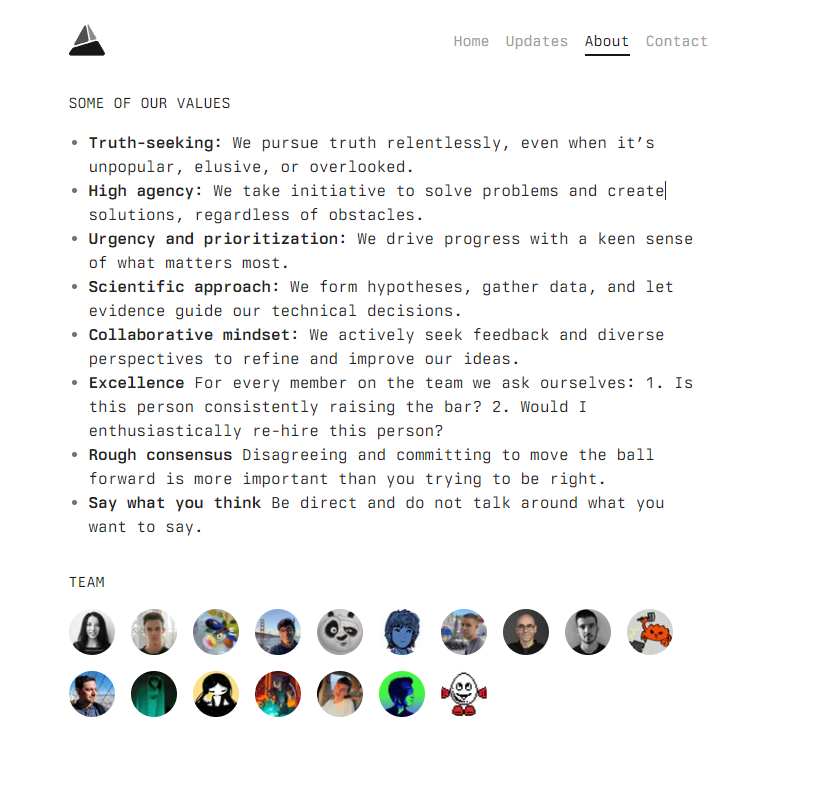Paradigm est personnellement impliqué dans le développement, ajoutant un nouveau joueur à la piste Layer2
Auteur original : Frank, PANews
On October 11, Paradigm announced that it had invested $20 million in Ithaca to build a Layer 2 blockchain called Odyssey. Unlike previous simple financial investments, Paradigm also sent several executives to Ithaca, including Paradigm CTO and general partner Georgios Konstantopoulos, who will serve as Ithacas CEO, and Paradigm co-founder Matt Huang, who will serve as Ithacas chairman.
Personally build Layer 2 Odyssey
In fact, there has always been a team within Paradigm building open source projects. According to Ithaca, in the past four years, Paradigm has organized a team of less than 20 engineers to build some commonly used open source tools in the industry, such as Reth and Foundry. From this perspective, Ithaca is actually Paradigm officially separating the technical project team as a new company. The first project of this new company is the Ethereum Layer 2 network Odyssey.
Konstantopoulos called Odyssey Layer 2 from the future in an interview with the media. What makes Odyssey different is that it provides multiple features of Ethereums future roadmap that have not been built by any other team, Konstantopoulos explained. More powerful smart contract wallets mean frictionless inclusion of cryptocurrencies, which is one of the most important problems being solved.
 Currently, Odysseys testnet Chapter 1 has been launched on Sepolia, built by Reth (OP Stack) and deployed on Conduit. PANews found that the wallet function currently launched by Odyssey is indeed different from previous blockchain projects. During use, Odyssey does not require traditional wallet extension applications to create an account, but can directly use Google or Apples key management tools.
Currently, Odysseys testnet Chapter 1 has been launched on Sepolia, built by Reth (OP Stack) and deployed on Conduit. PANews found that the wallet function currently launched by Odyssey is indeed different from previous blockchain projects. During use, Odyssey does not require traditional wallet extension applications to create an account, but can directly use Google or Apples key management tools.
An innovative network without wallets, gas coins, or bridges
According to official information, Odyssey allows users to log in without installing a wallet, owning Gas tokens, interacting with the bridge, and setting up new RPCs. This can work across devices and applications, leveraging the operating systems keychain or password manager. In addition, Odyssey Chapter 1 also includes multiple EIPs (Ethereum Improvement Proposals), such as EIP-7702 (account abstraction), EOF (EVM object format), RIP-7212 (secp 256 r 1 elliptic curve precompilation) and other new technical solutions. In particular, it is reported that RIP-7212 can reduce gas costs by up to 50 times compared to traditional methods. Ithaca said that it has worked closely with L2 networks such as Optimism, Uniswap, Conduit, Flashbots, Succinct and Base to maximize EVM performance and improve developer and user experience.

As of now, Odyssey has not had many available features. According to its test network browser, the total number of addresses is about 2,700, and the total number of transactions is 130,000. It is reported that the next two network upgrades of Odyssey are called Pectra and Fusaka. However, there is no news about whether there is an airdrop plan, which users may be more concerned about.
If the investment project performs poorly, it is better to do it yourself
Recently, the Layer 2 track seems to have welcomed some different players. Previously, Uniswap announced the launch of Unichain, and now Paradigm investors have personally started to build Layer 2.
Previously, Paradigm has invested in multiple Ethereum L2s, such as Optimism, StarkNet, Aztec Network, Blast, etc. However, judging from the current development situation, the status of these projects is not ideal. In the comparison of several L2s, PANews found that the data of L2s such as Optimism, StarkNet, and Blast are far lower than Arbitrum or Base. Taking the data on October 10 as an example, the number of active addresses of Optimism, which performed best, was only 98,000, and Blast was 38,000, while Base was 1.6 million and Arbitrum was 480,000 in the same period.
Perhaps the investment in L2 failed to meet Paradigms expectations, so it chose to get involved now?
In addition to L2s unsatisfactory performance, some of Paradigms other recent investments have also performed poorly. Friend.tech, which was once popular, has been in a slump since the airdrop, and on July 9, the number of daily active users dropped to 15. As of September 24, data showed that Friend.tech had only 8 daily active users. Paradigms reputation has also been damaged.

We don鈥檛 know if Paradigm has had enough of unreliable partners and chose this move. On the short official website, Ithaca specifically uses values as a column (there are 4 columns in total), one of which says, It is more important to be committed to moving things forward than to try to be right. Perhaps this sentence is the annotation of Paradigms actions.
This article is sourced from the internet: Paradigm is personally involved in the development, adding a new player to the Layer2 track
En relation : Découvrez la nouvelle génération de jeux Ton du Safepal Ton Fest
Introduction Récemment, Telegram (TG) et le réseau Ton sont devenus fréquemment des sujets brûlants. Le 28 août, en raison d'une augmentation des transactions $DOGS, le réseau Ton a été congestionné, provoquant une surcharge de la fonction de récupération de place et une perte temporaire de consensus pour de nombreux nœuds de vérification. Afin de rétablir le fonctionnement normal du réseau, les nœuds de vérification doivent être redémarrés vers midi. Alors, quelles applications existe-t-il sur le réseau Ton ? Qui sont ses utilisateurs ? Explorons ensemble. 1. État actuel de l'écosystème Ton L'écosystème Ton s'appuie sur 1 milliard d'utilisateurs de TG. Après six mois de développement rapide, le nombre de portefeuilles actifs sur la chaîne Ton a atteint 14 millions, mais le taux de pénétration n'est que de 1,4%. En revanche, le taux de pénétration de WeChat Pays en 2023…







